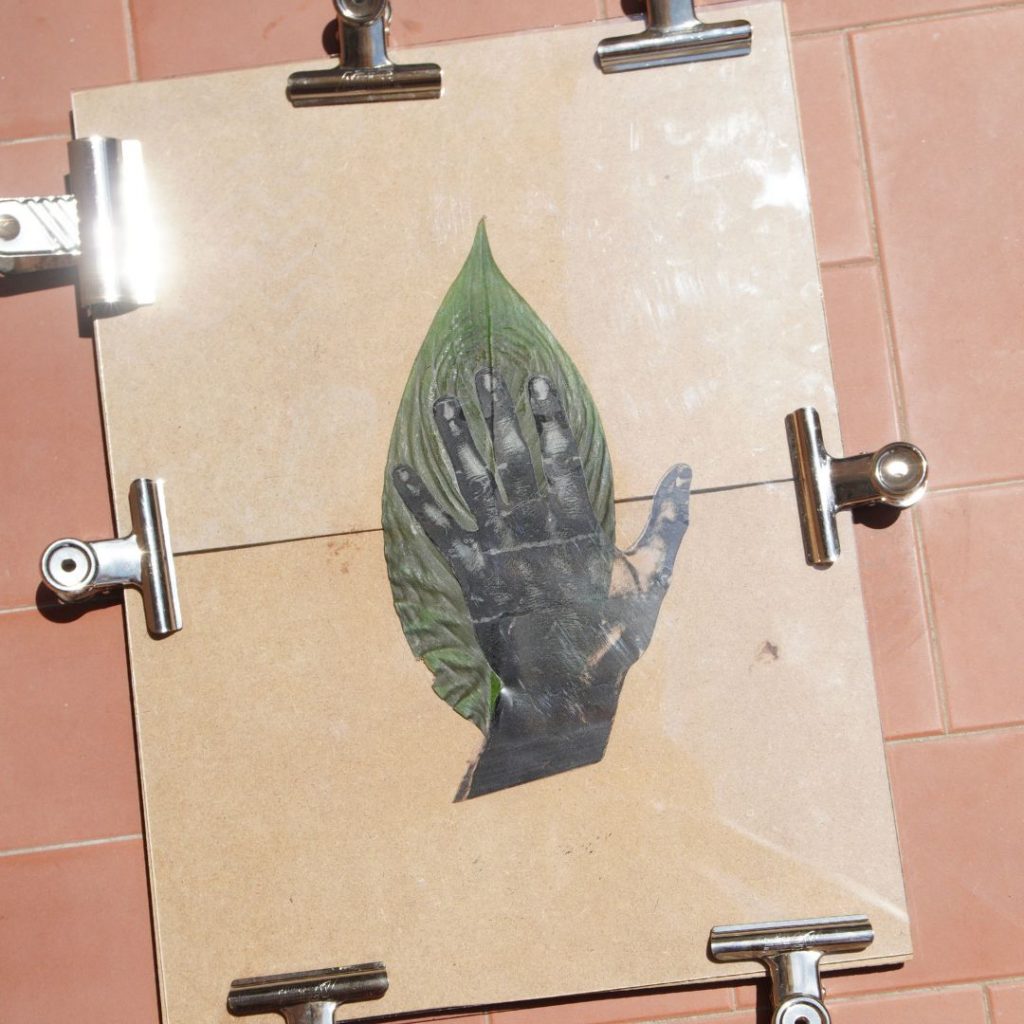Today, Alternative Processes show REVOLOG readers how to print on leaves without using ANY chemicals, a magical technique that brings the power of photosynthesis to the realm of photography.
Alternative Processes, as the name suggests, is a platform that promotes and educates about historical processes, while challenging the conventional norms of photography. We have a digital hub with tons of free resources and a vibrant Instagram community. We recently launched our very own online and self-paced AP academy that teaches how to print on pretty much any surface you can think of (glass, seashells, eggshells, teabags, wood, fabric, the list goes on..)
Today, we show REVOLOG readers how to print on leaves without using ANY chemicals, a magical technique that brings the power of photosynthesis to the realm of photography.

What is Chlorophyll Printing?
Chlorophyll printing is an organic process that involves capturing images on the surface of leaves using the power of sunlight. The name ‘chlorophyll’ denotes the pigment responsible for a leaf’s green color and its ability to absorb light—a fundamental aspect of photosynthesis. In essence, this process utilizes the leaf as a photographic paper and sunlight as the developer, causing the chlorophyll in the leaf to fade where it is most exposed, thereby imprinting an image on the leaf’s surface.

Step-by-Step Guide
- Selection of Leaf: Begin by selecting a suitable leaf. It should be large, flat, and without tears or insect damage. More mature leaves are preferable due to their denser chlorophyll content. Each plant specie will respond differently according to the quantity and quality of chlorophyll present. We have a free cheat-sheet you can download where we made a list of the most suitable species.
- Preparation of Negative: Create a black and white digital positive of the image you want to print. It should be very contrasted. To do this, you can use photoshop or GIMP (free). Then you will need to buy transparency paper and print on it using an inkjet printer. We have an article on how to create digital transparencies (you will need a positive, not a negative, so you won’t need to invert the image!)
- Contact Print Preparation: Attach the negative onto the leaf. You can achieve this by using a glass sheet to keep the negative flat and in close contact with the leaf surface. Ensure that the emulsion side of the negative is in contact with the leaf surface.

- Exposure to Sunlight: Expose the leaf to direct sunlight. The exposure time can vary greatly depending on the intensity of sunlight and the thickness of the leaf, generally ranging between a few hours to several days. A printing frame should be employed in order to be able to check the progress of the exposure without moving the transparency.
- The image appears: The image develops gradually as the sunlight causes the chlorophyll under the clear areas of the negative to bleach, leaving behind a unique print. This may take from 4 hours up until several days


Preserving a Chlorophyll Print
The key to preserving a chlorophyll print is to halt the photosynthetic process to ensure the image doesn’t continue to develop and potentially fade away.
Deactivation of Chlorophyll: The first step is to deactivate the chlorophyll. Submerge the leaf in a solution of alcohol (like rubbing alcohol) for a few minutes. This step dehydrates the leaf and halts photosynthesis.
Copper Sulfate bath: Copper sulfate acts as a mordant to help fix the image on the leaf and prevent further development.Prepare a solution of copper sulphate by dissolving it in warm water. Then, immerse the leaf in this solution for five minutes. The copper ions bond with the chlorophyll, effectively halting further photosynthetic reaction and development of the image.
Rinse and Dry: After removing the leaf from the copper sulphate solution, rinse it under cold water to wash away any excess solution. Pat the leaf dry gently using paper towels, then press it between the pages of a heavy book for a few days to ensure it’s completely dried.
Sealant Application: Apply a UV-resistant sealant to both sides of the leaf. This protective layer prevents UV light exposure that could cause the print to fade over time.
As our journey into the heart of chlorophyll printing starts, we invite you to continue exploring the limitless possibilities of alternative photographic processes. Dive deeper into the fascinating world of non-traditional photography with our comprehensive online course at Alternative Processes Academy.
We want to thank Alternative Processes for taking the time to prepare this great guide to chlorophyll printing. Be sure to follow them via instagram or have a look at their website
